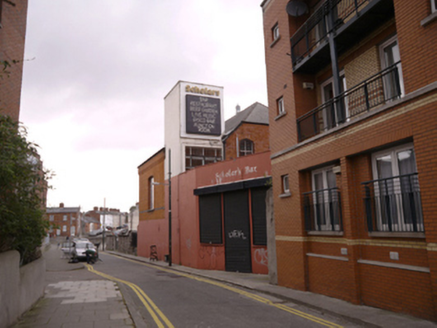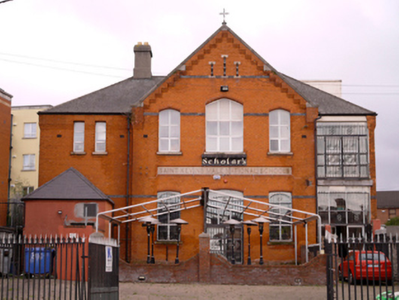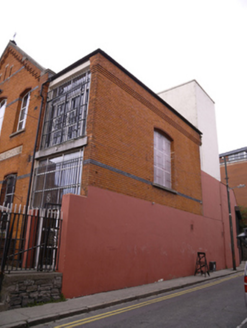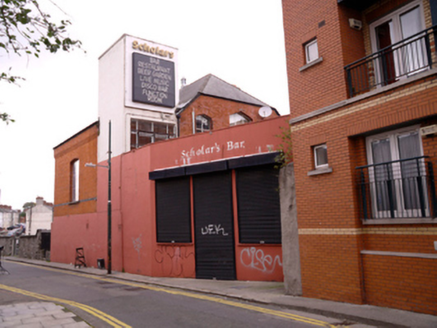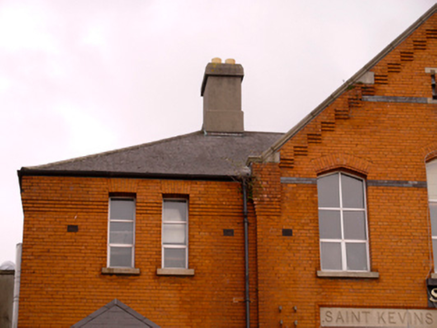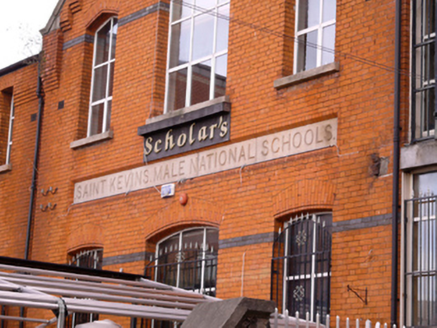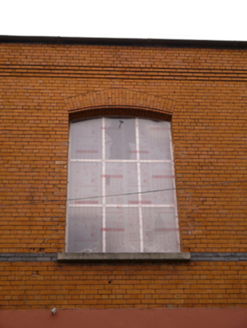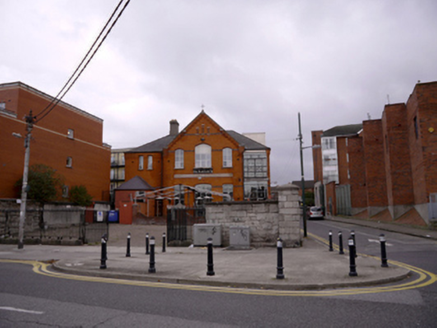Survey Data
Reg No
50080876
Rating
Regional
Categories of Special Interest
Architectural, Historical, Social
Previous Name
Saint Kevin's Male National Schools
Original Use
School
Historical Use
Public house
Date
1890 - 1900
Coordinates
314968, 232980
Date Recorded
24/10/2013
Date Updated
--/--/--
Description
Detached five-bay two-storey former school, built 1895, having gabled breakfront to front (west) elevation and recent single-storey extension to front, three-storey tower and single-storey extension to rear. Subsequently in use as public house, now disused. Hipped artificial slate roofs, pitched to breakfront, having carved granite verge stones to gable with metal cross finial, rendered chimneystack and stepped red brick eaves course. Red brick walls laid in English garden wall bond with black brick stretcher bond courses and cut granite name plaque. Rendered walls to ground floor of south elevation. Later glazed wall to south bay of front elevation. Tudor arch window openings to first floor windows of breakfront and to rear, with paired square-headed window openings to north bay of front elevation. Segmental-arched window opening to south elevation and ground floor central bays, having granite sills, some bull-nosed voussoirs and replacement uPVC windows. Segmental-headed door opening with bull-nosed voussoirs and replacement uPVC door. Set back from street with coursed rubble calp limestone walls having metal railings to south boundary, and recent granite boundary wall and railings to front boundary.
Appraisal
This former school retains much of its early character and form. Its advanced breakfront and decorative brickwork enliven the front facade and the variety of window opening types adds interest. The school was designed by Dublin architect George Coppinger Ashlin, who was also responsible for a large number of ecclesiastical buildings throughout the country. The brightly coloured red brick with contrasting decorative detailing is typical of the late Victorian and Edwardian period, when developments in brick manufacture led to greater availability and affordability of decorative bricks.
